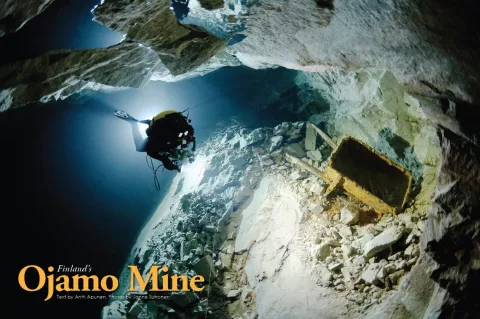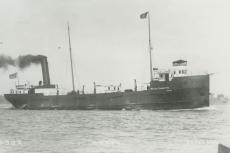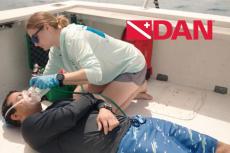Diving the Ojamo lime mine in Finland, 138 meters of water, 4°C.
Imagine sub-zero temperatures and a hole in the ice. That is your entrance to the underworld of Ojamo, the most popular diving site in Finland.
Contributed by
Ojamo lime mine is situated 60 kilometers west of Helsinki. It attracts thousands of visitors every year. The mine area is part of the city of Lohja, known for its industry.
The mining operations began here in the 19th century. When the open pit got too deep, mining was taken into the tunnels. More technology was introduced to boost the human powered operations. Ojamo mine was a key driver of development for the area for decades. It fuelled the local economy and provided work for the locals.
When Finland entered the war with Russia in 1939, the mine was turned into a prison camp. The prisoners worked in shifts and lived miserably in tents at the bottom of the open pit. There weren’t enough clothes for everyone, so the prisoners exchanged mantels between shifts.
Today, since water filled the mine, it looks just like another small lake inside the forest. The shallowest tunnels start at a depth of 28 meters, from the bottom of the open pit. The mine reaches a depth of 250 meters at the bottom of the main mining shaft. The exact depth is not known, as there was some landfill done in the shaft after the mine was closed. The deepest recorded dive at the mine is 160 meters.
The water level reaching ground level makes diving easy at Ojamo. Divers can park their cars next to the lake and jump into the water. In many other places, like the popular Tuna Hästberg iron mine in Sweden, gear needs to be lowered deep into the mine with winches, tens or even hundreds of meters, before reaching the water level.
The huge mining halls are quite an experience. I remember vividly my first dive into one of these huge cathedrals. My hands started moving in circles, as if I was falling down from a cliff. The crystal clear water and dark depths deceive the eye of the inexperienced. When in operation, the mine was not a place for a person with bad nerves or a phobia of heights.
The halls are sometimes so big that no walls can be seen when crossing them. The only guide is the white line running through the emptiness. These chains of halls can be quite confusing. In a natural cave, it’s sometimes easier to remember details. In a mine, the mechanical marks of mining all look the same.
A country without natural caves
There are many kilometers of tunnel at Ojamo, although the longest continuous stretch is only 1.7 kilometers, at the 88-meter level.
There’s also little variation in depth on each level; the tunnels run almost horizontally. There are plenty of shafts and mining halls that are used for travelling from one level to another. All this makes planning dives easier than in a natural cave, as the multi-level plans can be reasonably accurate compared to natural tunnels going up and down all the time. It means that there are no reverse profiles either.
In Finland, there are no natural caves suitable for diving. The ground is solid granite, which is too hard for water to carve underground rivers into. Even the limestone at Ojamo is tightly squeezed inside hard rock where carbon dioxide cannot eat its way through the stone. From the mine diving point of view, granite has many benefits. The corridors and vast halls are stable even without supporting structures.
There are many closed mines suitable for diving in Finland. Many of them have been closed only recently, or there is no required diving infrastructure for various political or geographical reasons. One example of these kinds of sites is the Outokumpu mine, a name known globally because of the mining company that started its operations from that very spot. Today, Outokumpu is one of the leading stainless steel and copper manufacturers in the world. For divers, the name means multiple kilometers of unexplored territory.
Many of the mining sites are in remote places. This means that their number of visitors is low compared to Ojamo, even when they are otherwise quite suitable for diving. One of the popular sites, Montola, was closed for a while because of a recent fatality—one of the few ones in the short history of Finnish cave diving.
The Montola accident was a typical cave diving accident, with the added local environmental characteristics. The water in the open pit was very murky, with a summer time visibility of only one meter or so (during winter the water is clearer, as there is algae in the water in the summer). The visibility probably played a part in the accident, as the team members got separated and did not recognize the shortest way out, even though the entrance was never very far away. So even in mines with almost no flow, the circumstances can be treacherous.
Great halls of dark granite
Ojamo mine has been dived for almost 40 years. The mining came to an end in the mid-1960s. The market price for lime had declined, and there was no financial point in continuing operations. After the mine closed, it slowly started to fill with water. With many kilometers of tunnels, it took quite a number of years before the water reached ground level.
The good news was that the mine was filled with ground water that had been filtered by thick top soil and gravel. The water inside the mine tunnels was crystal clear. The northern lakes lack large mammals and other animals for the most part, but perches, northern pikes and burbots quickly populated the open pit and its murky waters. Crayfish followed soon after.
The early attempts to explore the mine were restricted by primitive cave diving equipment. Finland was far away from the influence of central European and North American cave diving communities. Diving was done mostly in the Baltic Sea by military and professional divers, and they were not too interested in exploring very deep into the mine. Their techniques and equipment were tuned to wreck diving and typically lacked the redundancy and capabilities required for deep cave diving.
In the beginning of 1990s, mixed gas technical diving started to take hold. First, non-military rebreathers were imported, around the turn of the millennium. That was also the time when cave diving training became more popular among Finnish divers. Before that, local rules and personal relationships primarily dictated who could dive and where.
The first expeditions charted the mining level at 28 meters. The largest part of the level became known as the Pearls, consisting of 13 big mining halls connected to each other with narrow passages. The level was suitable for open circuit nitrox diving, so it was mapped quite quickly.
The next step was the 56-meter level. Air was still the most common diving gas, so the level remained well inside the air diving limits. It was explored all the way back in the beginning 1990s. The dives were considered remarkable by the standards of the time. Today, with all sorts of rebreathers around, these two to three-hour dives don’t seem anything out of the ordinary.
The major limiting factor at Ojamo has always been the cold water. The constant 4°C at the bottom makes sure that any dive over three hours is always a bit of a challenge. Today, heated vests and the fixed habitat make things easier. But even now, five or six hours in the chilling water can be torture—not to mention, hazardous, if anything goes wrong with the suit. Dry gloves are imperative. Wet gloves simply can’t protect against water that cold for hours.
The traditional Finnish style is to dive with thick, custom-made rubber suits. These Loitokari suits are a Finnish phenomenon, which often amuse foreign divers. But there are certain advantages. The rubber suit seems to be almost impossible to tear. Remembering the cold water, this consideration is quite important.
Scooting around the forest
Some exploration was done at the 88-meter level in the early days, but the exploration came to a halt when the practical limits for open circuit dives were reached. It took a few years before rebreather diving techniques were updated to the requirements of 88- and 138-meter level push dives.
The 88-meter level was explored all the way to the end beneath Lake Lohja in 2008. After that, the focus has been on the 138-meter level. There are still plenty of tunnels to explore.
Most techniques used in diving the mine are similar to those used in diving natural caves.
Divers follow maps when they dive in natural caves, unless exploring. Similarly, in a mine, you typically have quite a clear idea of the routes, as the mines are well documented. Of course, the maps don’t reveal everything, and three-dimensional reality is often surprisingly different from the old drawings.
The conditions in a mine don’t vary much. The temperature is constant at depth. Only the surface water in the open pit warms up in the summer time to about 20°C. Finns primarily use argon as the drysuit gas. Bigger molecules seem to insulate better, although there is no precise scientific evidence supporting the habit. Staying warm is the main priority on any dive. Even just one hour in cold water, unprotected, can be fatal or at least a main contributor to decompression sickness (DCS).
There are no currents in the mine, and the visibility at depth rarely changes. However, the surface water is a different story. During summer, it’s all murky. The visibility drops to a meter or sometimes even less. Even though the decompression hours are warmer, the zero visibility poses a different challenge.
There is silt, as in a natural cave. With no current, the ceiling in the previously un-dived sections of the mine can release plenty of silt when hit with bubbles.
The mine is full of signs of human presence. Tools have been laid down where work was last performed. The rails and mine wagons still seem like they are waiting for another cargo load to take to the surface. At the 138-meter level, nothing has been touched. Layers of silt cover everything, but you can still recognize most details.
The light bulbs hang from the ceiling as if the lights could be turned on again. Hammers wait for their users. Neatly piled dynamite boxes seem like they were placed there yesterday.
In the open pit, trees still stand. During the winter, when there is an ice cover on top of the lake, the light plays its own tricks. It is a wonderful scooter ride through the silent forest. It makes the long and cold decompression hours easier to manage. ■
For more information about Ojamo mine and the authors, please visit Diversofthedark.com. Further details about visiting Ojamo mine can be found at Kaivossukeltajat.com.



























